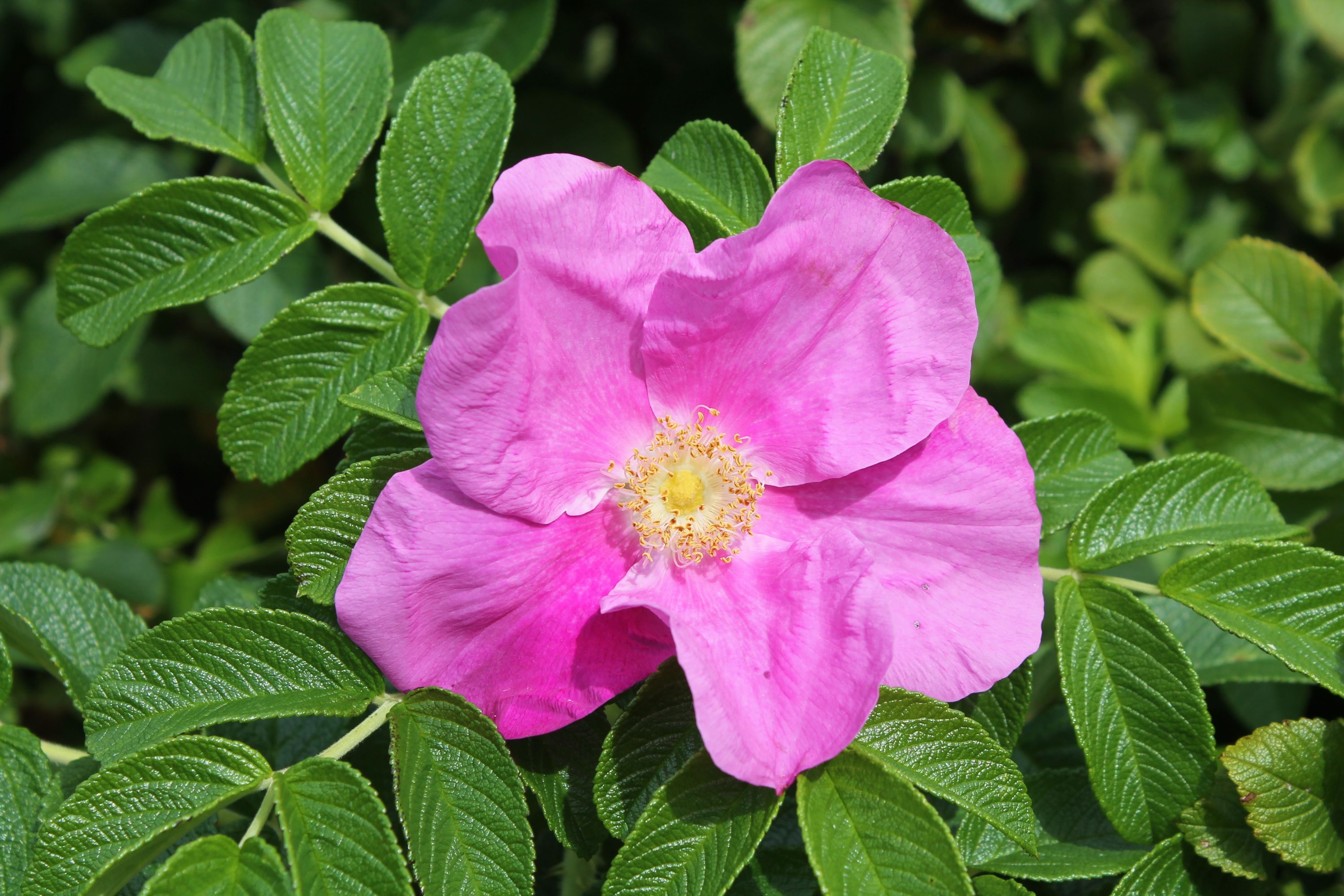Cinnamon Rose
(Rosa majalis)

Description
Rosa majalis (syn. R. cinnamomea sensu L. 1759, non 1753;R. cinnamomea auct. non L.; cinnamon rose; double cinnamon rose) is a species of deciduous shrubs in the genus Rosa, native to forests of Europe and Siberia. It grows to 2 m. and yields edible hip fruits rich in vitamin C, which are used in medicine and to produce rose hip syrup. It is native to Siberia and northern Europe. Its European distribution encompasses much of European Russia, the Baltic countries and Scandinavia (without Denmark), with more isolated occurrences in Central Europe, primarily in wet habitats in Ukraine, Belarus, Poland, Czechia, Germany and the Alps. It has a history of cultivation in gardens, which in Britain dates to the 16th century. The binomial name Rosa majalis and its synonym Rosa cinnamomea are both ambiguous and have variously been applied to other species of Rosa. A rose is a woody perennial flowering plant of the genus Rosa, in the family Rosaceae, or the flower it bears. There are over three hundred species and tens of thousands of cultivars. They form a group of plants that can be erect shrubs, climbing, or trailing, with stems that are often armed with sharp prickles. Their flowers vary in size and shape and are usually large and showy, in colours ranging from white through yellows and reds. Most species are native to Asia, with smaller numbers native to Europe, North America, and northwestern Africa. Species, cultivars and hybrids are all widely grown for their beauty and often are fragrant. Roses have acquired cultural significance in many societies. Rose plants range in size from compact, miniature roses, to climbers that can reach seven meters in height. Different species hybridize easily, and this has been used in the development of the wide range of garden roses. The leaves are borne alternately on the stem. In most species they are 5 to 15 centimetres (2.0 to 5.9 in) long, pinnate, with (3–) 5–9 (–13) leaflets and basal stipules; the leaflets usually have a serrated margin, and often a few small prickles on the underside of the stem. Most roses are deciduous but a few (particularly from Southeast Asia) are evergreen or nearly so. The flowers of most species have five petals, with the exception of Rosa sericea, which usually has only four. Each petal is divided into two distinct lobes and is usually white or pink, though in a few species yellow or red. Beneath the petals are five sepals (or in the case of some Rosa sericea, four).
Taxonomic tree:







